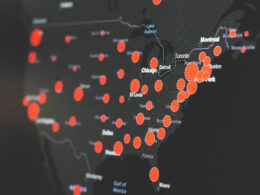Customer Journey mapping, as a concept, is not necessarily a new idea. In fact, several sophisticated platforms have been acquired within the past year which points to the fact that the technology is not only known (to some extent) but that it is perceived as important. It also points to an awareness of a growing demand for those kinds of services.
That being said, one of the things that has been hobbling so many of those technologies is the fact that, in spite of their very sophisticated mapping abilities, responding to those insights always required a “manual” approach to devising the fixes and then implementing them.
We spoke with Anthony Adelaar, inQuba’s Head of Product Marketing to get the company perspective and hear about what’s behind their approach.
TheCustomer:
Tell us a bit about how inQuba’s solution automates not only the insights & recommendations, but in fact, also implements them.
Anthony Adelaar:
Traditional journey maps, designed qualitatively in a workshop and then immortalized on the boardroom wall, are unfortunately often conceptual at best. They’re an internal process view rather than what customers really experience. There are many solutions that aid the process but the outputs are usually just digital versions of the same.
In contrast, businesses that transition from journey mapping to journey management, such as the inQuba platform, can use the platform for ingestion of customer and business data so that they can discover and visualize customers’ actual journeys, drop-off points and obstacles. With this insight, the business can easily collect feedback and measure sentiment at each point, swiftly launch real-time interventions and nudges to help customers reach their goals, and ultimately improve customer conversion, retention and experiences! When customers reach their goals then the business reaches its goals too.
TheCustomer: Let’s talk for a moment about the complexity and the complex undertaking involved in measuring, monitoring and engaging customers in an omni-channel world? Not only are consumers expecting to access wherever, however and whenever they want, oftentimes they are engaging on more than one channel at a time. How do you solve for that kind of dynamic?
Anthony Adelaar:
Today’s customers are empowered, digital-first and creative in solving their own problems. They engage businesses through their preferred channels and expect a seamless experience that remembers their context. The inQuba solution is able to easily capture an end-to-end customer journey that may begin with a Google ad and then spans the company website, call centre, social and finally a conversational dialogue on a chat app. This unbroken context and single view of every customer ensures hyper-personalization, relevance and contextual engagement. It’s also possible that customers could be on multiple journeys at the same time and this context is essential for empathetic and relevant engagement.
It’s also important to note that inQuba is a Microsoft partner and is available through the Azure Marketplace. inQuba’s integration capabilities allows businesses to easily bolt the solution on to their existing solutions, whether Dynamics or something else.
TheCustomer: As any marketer will tell you, affecting customer behavior is both an art and a science and requires a deft touch to guide & encourage consumer actions without crossing any number of lines (ie. Frequency & channel tolerances, language preferences, etc.). What are some of the methods inQuba employs to create effective “nudges”? And how is that accomplished in real-time?
Anthony Adelaar:
Guiding behavior is certainly an art, and different business challenges and use cases demand different approaches. It’s important to understand the behavior that needs to be encouraged at each point, and then use the appropriate type of real-time engagement. It may be that customers need a value communication and a benefit reminder to help them to progress. Or, customers may have lost momentum because they’re confused and they just need some information. At inQuba we’ve found that engagements that are crafted to be hyper-personalized, contextual, engaging, and in real time are the most effective. Channel selection is also important as cohorts will have preferences. Real time engagements are made possible by the continual real-time ingestion of customer behavior into the platform which can then trigger actions in the moment.














3 comments